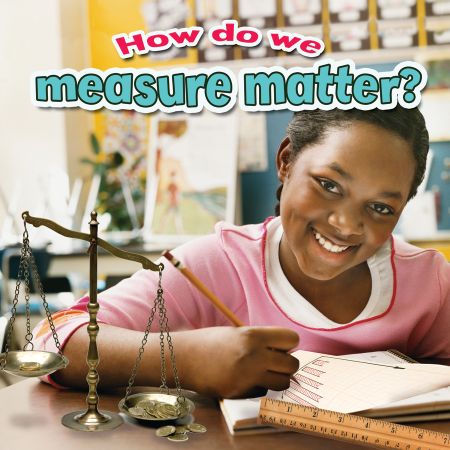| ________________
CM . . .
. Volume X Number 2. . . .September 13, 2013
excerpt:
How Do We Measure Matter?, by Lynn Peppas, is one book in Crabtree’s nonfiction series “Matter Close-Up”. While the other three books in the series focus on the different states of matter, this book emphasizes different types of measurement, including the metric system and the U.S. customary system, as well as how to measure temperature, volume, weight, mass, and size. Readers learn about different measurement tools, such as thermometers, balances, rulers, and beakers. The book ends with a section explaining how data collected from measurements can be presented in graph form. Also included near the end of the book is a list of books and websites for students to learn more about matter and measurement. Full of colour photographs, How Do We Measure Matter? is visually appealing. A highlight of the book is the “What Do You Think” boxes that ask readers to consider questions about measuring matter and which encourage readers to try other hands-on measurement activities. Teachers using How Do We Measure Matter? in the classroom would find these questions and activities helpful as additional class assignments or as extension activities. How Do We Measure Matter? is a solid choice for integrating science, mathematics, and literacy skills. Students not only learn about the properties of matter, but they also learn about measurement and data management (graphing). This book is also a good choice for reinforcing nonfiction concepts of print, such as a glossary, index, photographs, and captions. How Do We Measure Matter? is written for budding scientists reading at the Grade 2 or 3 level, but the theme and content of the book make the book suitable for early junior grades as well. Recommended. Dr. Kristen Ferguson teaches literacy education at the Schulich School of Education at Nipissing University in North Bay, ON.
To comment
on this title or this review, send mail to cm@umanitoba.ca.
Copyright © the Manitoba Library Association. Reproduction for personal
use is permitted only if this copyright notice is maintained. Any
other reproduction is prohibited without permission.
NEXT REVIEW |
TABLE OF CONTENTS FOR THIS ISSUE
- September 13, 2013.
AUTHORS |
TITLES |
MEDIA REVIEWS |
PROFILES |
BACK ISSUES |
SEARCH |
CMARCHIVE |
HOME |
